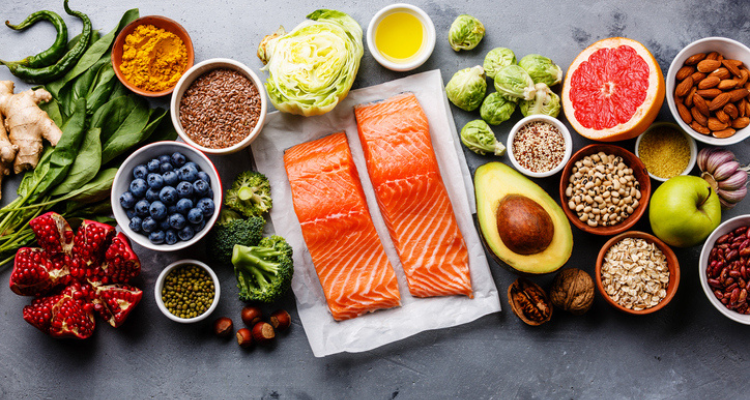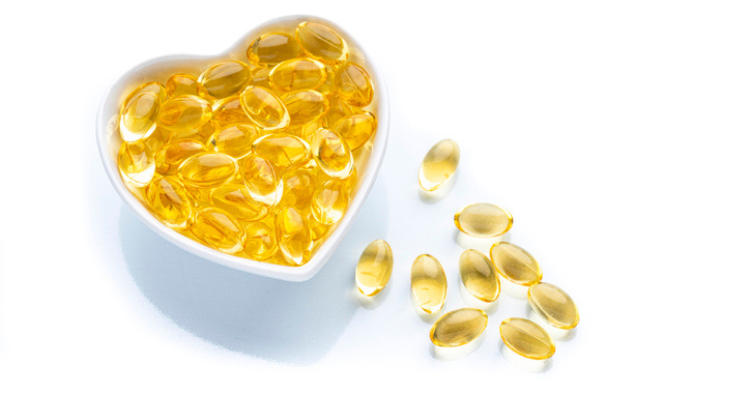
Dietary fats are perhaps the most misunderstood macronutrient among the three (protein, carbohydrates, and fat). We tend to categorize fats as “bad”—but in reality, fatty acids are fundamental to human health. There are three fatty acids that should be regularly consumed in healthy ratios for optimal wellness.
The three fatty acids most beneficial to health are omega-3s, omega-6s, and omega-9s. Most people in the US get too many omega-6s from unhealthy sources (primarily rancid vegetable oils), while omega-3 consumption is often low. By including the right foods in the correct amounts in your daily diet, you can support optimal levels of fatty acids in the body.
what are essential fatty acids?
The two fatty acids that are considered essential for overall health are omega-3s and omega-6s. The body can’t produce them and must obtain them from foods or a high quality supplement, although omega-9 fatty acids are also important. All three fatty acids offer significant health benefits, but consuming the right balance is crucial.
Essential fatty acids are also known as polyunsaturated fats. The word “polyunsaturated” refers to a specific chemical structure: “poly” means many and “unsaturated” refers to double bonds.

omega-3s
Many people are deficient in omega-3 fatty acids (a deficiency that comes in a close second behind vitamin D), and health care professionals often recommend supplementation with fish oil or other omega-3 supplements. A SAD (Standard American Diet) tends to be low in omega-3 and high in omega-6 fats, contributing to health issues.[1]
The most common forms of omega-3 fatty acids include eicosapentaenoic acid (EPA), docosahexaenoic acid (DHA), and alpha-linolenic acid (ALA). These fats play a key role in healthy cell membranes and carry out important functions like supporting balanced cholesterol and triglyceride levels, improving cognitive health and mood, helping to maintain a healthy weight, regulating inflammatory pathways, and promoting bone health, among other benefits.[2][3]
omega-6s
While omega-6 fats have gotten a bad rap due to their pro-inflammatory potential, this is only the case if consumed excessively and from unhealthy sources. In reality, omega-6 fatty acids are important for health and play a key role in energy production. Omega-6 fatty acids are also polyunsaturated; however, the last double bond contains six carbons. These fats are also essential, meaning you must get them from foods. Linoleic acid is the most common type of omega-6 and can be converted into others, such as arachidonic acid (ARA).
Both EPA (the omega-3 fatty acid mentioned earlier) and ARA are used to produce eicosanoids, but those made by ARA are more prone to increasing inflammatory pathways.
Other omega-6 fatty acids that offer considerable benefits to health include gamma-linolenic acid (GLA), found in evening primrose oil and borage oil. Conjugated linoleic acid (CLA) has also been shown to help weight management.[4]
omega-9s
The least well-known omega fat is the omega-9 class of fatty acids, which are monounsaturated fats like those found in olive oil. Omega-9s only have one double bond, and the most common is oleic acid. Unlike the other omegas, these fats are made by the body, so they aren’t considered essential.
Primary benefits of omega-9 fatty acids include increased insulin sensitivity, regulation of the body’s inflammatory response, and healthy triglyceride levels.
what are the benefits of adding foods with fatty acids to your diet?
While omega-6 fatty acids have gotten a bad rap for being pro-inflammatory, the key is getting a healthy balance of all fatty acids from foods. Within the scope of a healthy diet, adding the right amount of foods rich in fatty acids lays the foundation for healthy cell membranes, proper brain development and health, balanced hormones, blood pressure regulation, liver function, immune health, and other vital bodily processes. Studies have also linked fatty acids with cardiovascular function and even longevity.[5]
foods high in fatty acids
The following foods are high in different fatty acids. It’s important to note that some people (especially women) are less able to convert plant-based ALA to DHA and EPA fatty acids. For these individuals, relying solely on plant-based omega-3 sources can be problematic. For vegans and vegetarians, algae oil is one plant source that offers EPA and DHA. Combining algae oil with other ALA-containing fats such as sesame, chia, pumpkin, flax, and hemp can help lay the foundation for a balanced intake of fatty acids.
omega-3 foods:
- Salmon
- Mackerel
- Anchovies
- Sardines
- Chia seeds
- Flax seeds
- Walnuts
- Walnuts
- Sunflower seeds
- Cashew nuts
- Almonds
- Olive oil
- Cashews and cashew nut oil
- Almonds and almond oil
- Avocado oil
- Walnuts
omega-6 foods:
- Walnuts
- Sunflower seeds
- Cashew nuts
- Almonds
It’s common to consume too many omega-6 fats in the form of vegetable oils like canola, soybean, and corn, which contributes to a fatty acid imbalance. Strive to eliminate or reduce industrial seed oils in favor of more nutritious cooking oils like ghee, grass-fed butter, olive oil, coconut oil, and avocado oil.
omega-9 foods:
- Olive oil
- Cashews and cashew nut oil
- Almonds and almond oil
- Avocado oil
- Walnuts
conclusion
When it comes to fatty acids, the problem often lies in an imbalanced ratio due to diet—one is not inherently “bad” while others are good. It's hardly ever necessary (or wise) to demonize an entire food group or food that comes from nature. Optimally, shoot for a 1:1 ratio of omega-3s to omega-6s, and include natural sources of omega-9s in your diet, primarily olive oil. If you are already dealing with a fatty acid imbalance, speak with your integrative doctor about whether or not omega-3 supplementation might be beneficial.

[1] Mariamenatu AH, Abdu EM. Overconsumption of Omega-6 Polyunsaturated Fatty Acids (PUFAs) versus Deficiency of Omega-3 PUFAs in Modern-Day Diets: The Disturbing Factor for Their "Balanced Antagonistic Metabolic Functions" in the Human Body. J Lipids. 2021 Mar 17;2021:8848161. doi: 10.1155/2021/8848161. PMID: 33815845; PMCID: PMC7990530.
[2] Grosso G, Galvano F, Marventano S, Malaguarnera M, Bucolo C, Drago F, Caraci F. Omega-3 fatty acids and…scientific evidence and biological mechanisms. Oxid Med Cell Longev. 2014;2014:313570. doi: 10.1155/2014/313570. Epub 2014 Mar 18. PMID: 24757497; PMCID: PMC3976923.
[3] Calder PC. n-3 polyunsaturated fatty acids…. Am J Clin Nutr. 2006 Jun;83(6 Suppl):1505S-1519S. doi: 10.1093/ajcn/83.6.1505S. PMID: 16841861.
[4] https://jissn.biomedcentral.com/articles/10.1186/s12970-015-0097-4
[5] Kaur N, Chugh V, Gupta AK. Essential fatty acids as functional components of foods- a review. J Food Sci Technol. 2014 Oct;51(10):2289-303. doi: 10.1007/s13197-012-0677-0. Epub 2012 Mar 21. PMID: 25328170; PMCID: PMC4190204.


















